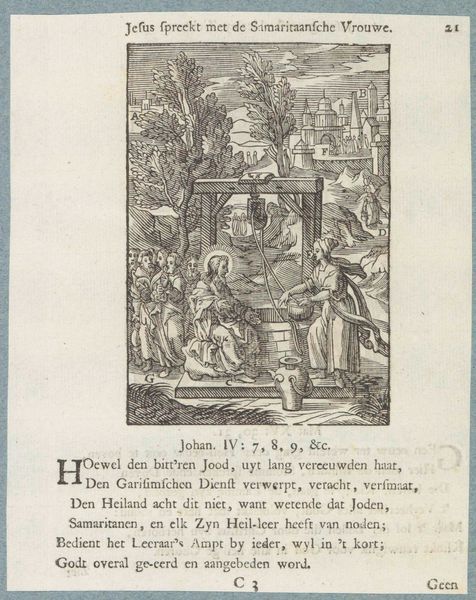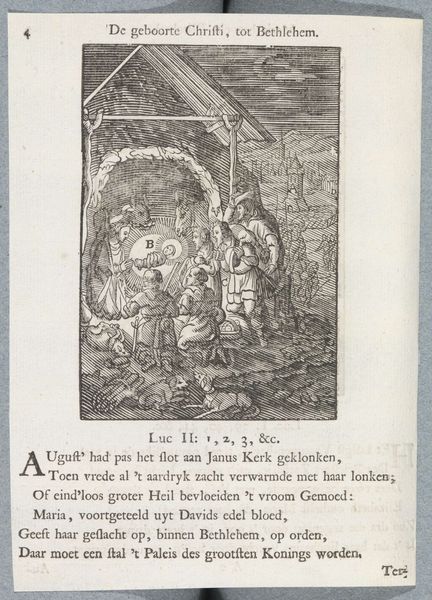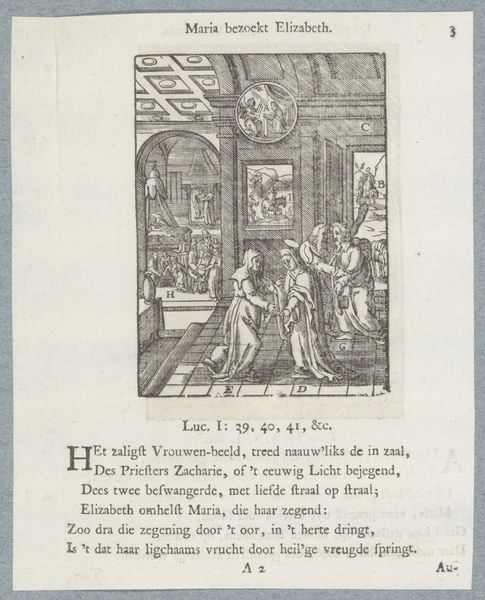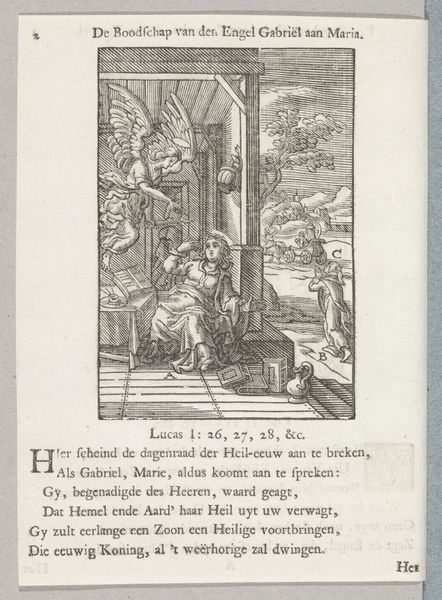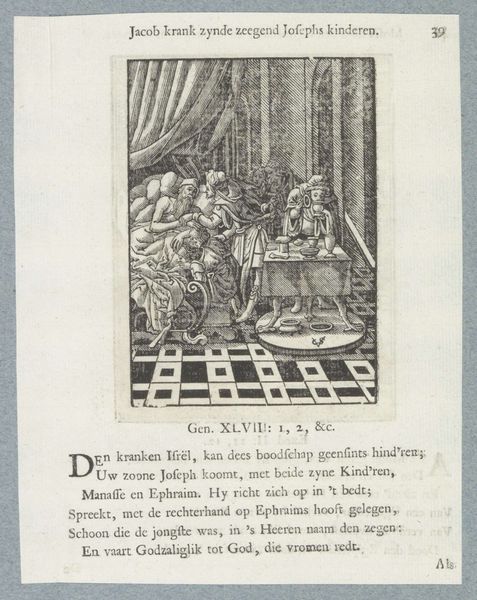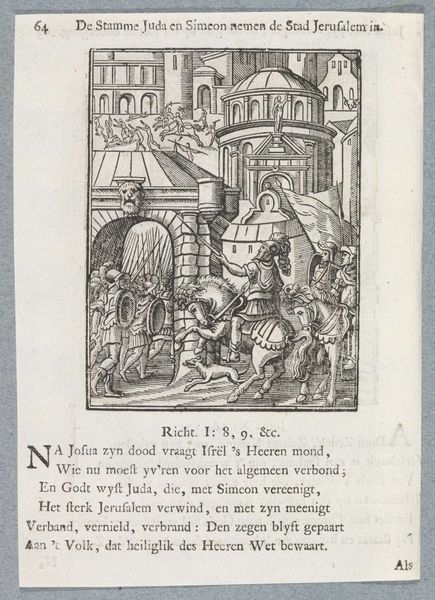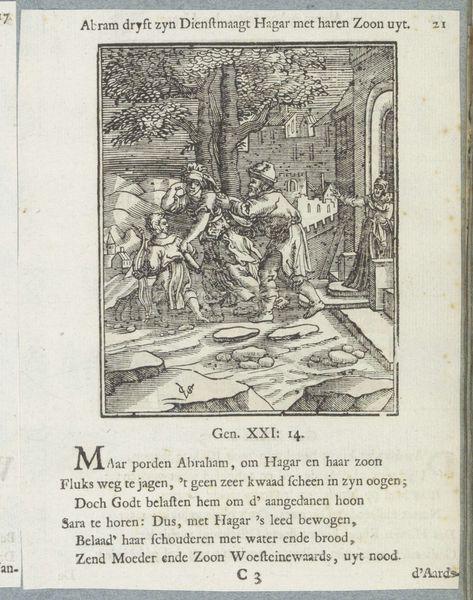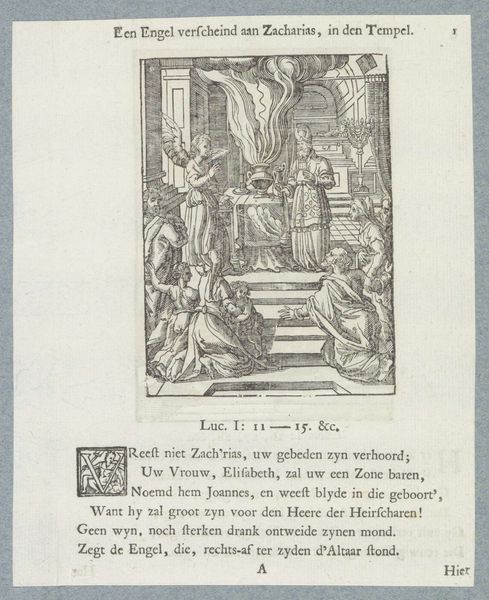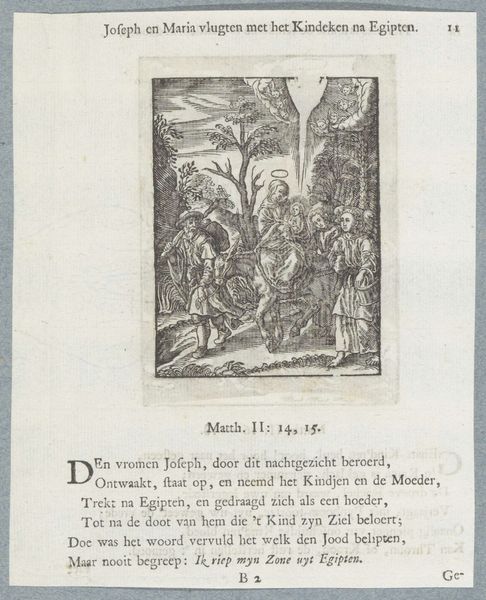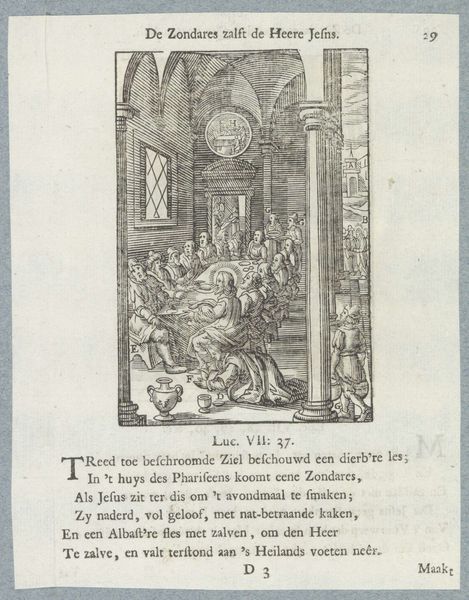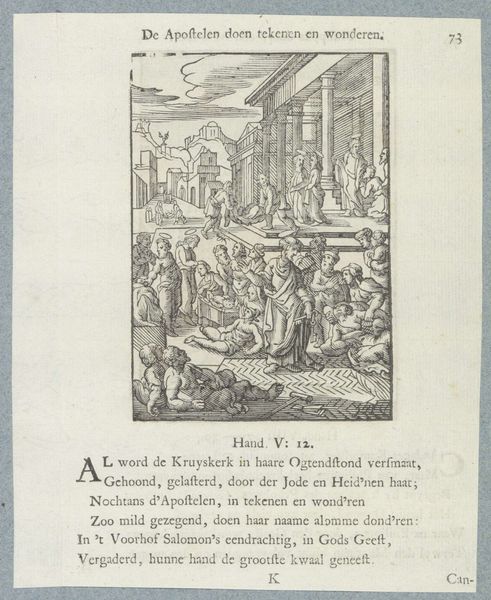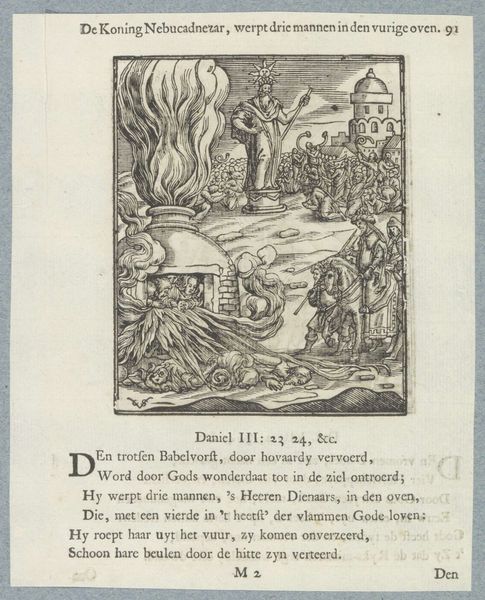
print, engraving
#
narrative-art
#
baroque
# print
#
old engraving style
#
history-painting
#
engraving
Dimensions: height 106 mm, width 85 mm, height 167 mm, width 136 mm
Copyright: Rijks Museum: Open Domain
Curator: Here at the Rijksmuseum, we're looking at "Bileam en de ezel" by Christoffel van (II) Sichem, likely created sometime between 1645 and 1740. It's a striking engraving. Editor: My first impression is its dynamism. Even though it's a small print, the artist has created this very active composition with diagonal lines and contrasting tones. Curator: Indeed, it's from the Baroque period. What's remarkable is the story it depicts: The biblical tale of Balaam, hired to curse Israel, who is confronted by an angel blocking his path. The engraving serves as an accessible way to spread the narrative to a broader audience within the society. Editor: Focusing on the form, notice how the tight, detailed linework creates this incredible texture. It almost feels like the scene is bursting outwards toward the viewer. Also, consider how much is suggested, not shown. The rendering of the angel's wings is very suggestive. Curator: Right, printmaking at this time facilitated the spread of religious and moral narratives throughout society. Sichem wasn't just an artist; he was part of a larger network involved in the production and dissemination of knowledge and beliefs. Editor: And the choice of medium reinforces this: the stark black and white. I find that it heightens the dramatic contrast, contributing to a powerful visual impact. This stylistic choice reinforces a sense of clarity between good and evil. Curator: Exactly, and by circulating these accessible images, it also provided moral lessons but reinforced social order. The story emphasizes obedience and divine intervention, concepts that served to reinforce traditional societal norms and the existing power structures of the time. Editor: It’s quite interesting how such a small piece—and in monochrome—can still convey such dynamism. There is such depth here when you consider how the technical components reinforce the purpose of this particular piece. Curator: Absolutely. Understanding that social function adds an important dimension to our understanding and appreciation of Sichem's work and that of his peers during this period. Editor: So, looking at this piece in detail gives me the strong impression that it conveys purpose far beyond simply conveying visual aesthetics.
Comments
No comments
Be the first to comment and join the conversation on the ultimate creative platform.

